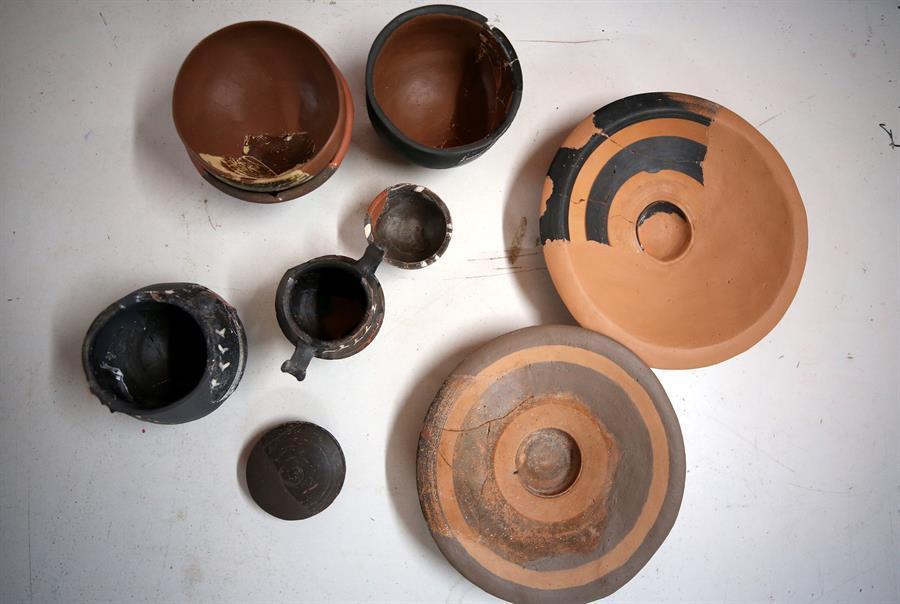
Ongoing excavations in Assos, which was one of the most important port cities in the ancient ages and home to many cultural riches such as an ancient theater, agora, necropolis and ramparts, have unearthed a 1,300-year-old iron machete and an ax used to shape wood.
Located within the borders of Behramkale village of Ayvacık district in the northwestern province of Çanakkale, the ancient city of Assos sheds light on the past with its richness on the ground as well as historical artifacts found underground during excavations.
New data have been obtained in the ancient city, where excavations have been carried out for nearly 40 years by Turkish academics.
Speaking to state-run Anadolu Agency, Çanakkale Onsekiz Mart University Department of Archeology lecturer and the head of Assos excavations, Professor Nurettin Arslan, said they were working on the Byzantine period, the last settlement era of Assos.
“The places we excavate are mainly buildings used as residences. The finds we found inside these structures, utensils and tools from the daily life of that age tell us about that period and what happened there. In this respect, this information is very important. However, it is very difficult to find utensils intact in such structures. By systematically digging, we are trying to reassemble these pieces like a puzzle with statistical and long-term studies,” he said.
Lots of cutting, drilling tools found
Arslan stated that one of the finds they found before was a grill made of terracotta.
“Today, this is one of the easiest methods of cooking meat. We see that people cooked meat on the barbecue or grill those days, too.”
Arslan also reported that among the finds were pots used to mix foods and make porridge by boiling grains such as chickpeas and lentils on the stove and that they also found containers where meals were served and food and beverages were stored.
“We have a large series of pottery belonging to the Byzantine period. We can see that this gives us a chance to better identify the shape and period of the utensils when we find them elsewhere. Next to the utensils, there are tools and materials used in that period. These were used for drilling, cutting, as well as production. There are many small objects and tools in the Byzantine-era structures. They are cutting and drilling tools,” Arslan said.
He stated that during the excavations this year, they unearthed two pieces of metal that had not been damaged.
“One of the iron objects we found this year is a large iron knife we call a machete. It was found in Byzantine structures that we call Gymnasium [training area for athletes]. The second one is an ax or a material that we guess was used especially for shaping and chopping wood. Although both tools are made of iron, they are very important because they preserved their form well. It gives us important information about what kind of tools were used in the production in that period,” he said.
“All finds we found in the residential areas are objects belonging to the Byzantine period in the 7th century, when the city was abandoned. We can see that these were tools and utensils used 1,300 years ago. Here, we also have a Hellenistic-era well. Its restoration continues. They are mostly painted and ornated containers. Each period has its own unique painting and shape in different forms. We can say that these are the elements that help us arrange the finds chronologically,” Arslan added.
Arslan added that each find unearthed is an important example of the material culture in Assos.